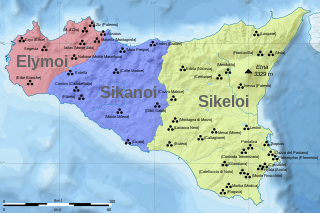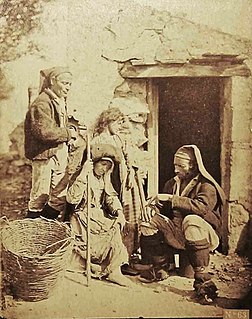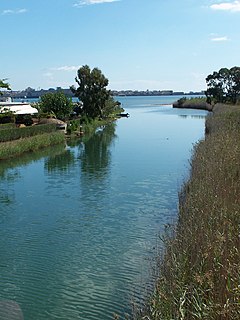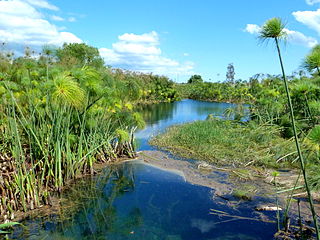
Syracuse is a historic city on the Italian island of Sicily, the capital of the Italian province of Syracuse. The city is notable for its rich Greek and Roman history, culture, amphitheatres, architecture, and as the birthplace of the pre-eminent mathematician and engineer Archimedes. This 2,700-year-old city played a key role in ancient times, when it was one of the major powers of the Mediterranean world. Syracuse is located in the southeast corner of the island of Sicily, next to the Gulf of Syracuse beside the Ionian Sea. It is situated in a drastic rise of land with 2,000 metres (6,600 ft) depths being close to the city offshore although the city itself is generally not so hilly in comparison.

The Sicels were an Italic tribe who inhabited eastern Sicily during the Iron Age. Their neighbours to the west were the Sicani. The Sicels gave Sicily the name it has held since antiquity, but they rapidly fused into the culture of Magna Graecia.

Sicilians or the Sicilian people are a Romance speaking people who are indigenous to the island of Sicily, the largest island in the Mediterranean Sea, as well as the largest and most populous of the autonomous regions of Italy.
Anapos was a water god of eastern Sicily in Greek mythology. When he opposed the rape of Persephone along with the nymph Cyane, Hades turned them into a river and a fountain, respectively.

The 1997 Summer Universiade, also known as the XIX Summer Universiade, took place in the island of Sicily, Italy.

Sortino is a town and comune in the Province of Syracuse, Sicily (Italy). It is located in the Anapo river valley.

The Necropolis of Pantalica is a collection of cemeteries with rock-cut chamber tombs in southeast Sicily, Italy. Dating from the 13th to the 7th centuries BC, there was thought to be over 5,000 tombs, although the most recent estimate suggests a figure of just under 4,000. They extend around the flanks of a large promontory located at the junction of the Anapo river with its tributary, the Calcinara, about 23 km (14 mi) northwest of Syracuse. Together with the city of Syracuse, Pantalica was listed as a UNESCO World Heritage Site in 2005.

Ferla is a town and comune in the Province of Syracuse, Sicily.

The Anapo is a river in Sicily whose ancient Greek name is similar to the word for "swallowed up" and at many points on its course it runs underground. The Greek myth of Anapos is associated with it.
Solarino is a comune (municipality) in the Province of Syracuse, Sicily (Italy). It is about 190 kilometres (120 mi) southeast of Palermo and about 15 kilometres (9 mi) west of Syracuse. As of 31 December 2006, it had a population of 7,365 and an area of 13.01 square kilometres (5.02 sq mi).

The Hyblaean Mountains is a mountain range in south-eastern Sicily, Italy. It straddles the provinces of Ragusa, Syracuse and Catania. The highest peak of the range is Monte Lauro, at 986 m.

The Ciane is a short river in southern Sicily, Italy. It flows into the Ionian Sea near Syracuse, after a run of 8 kilometres (5 mi), at a common mouth with the Anapo.

Mount Lauro is a mountain reaching 986 metres located in south-eastern Sicily belonging to the chain of Hyblaean Mountains, stretching between the three provinces of Catania, Ragusa and Siracusa. Monte Lauro is part of a complex of extinct volcanoes having formed under the sea during the Miocene epoch.

Akrai was a Greek colony founded in Sicily by the Syracusans in 663 BC. It was located near the modern Palazzolo Acreide.

Monte Casale is a mountainous elevation on Sicily in Italy, reaching 910m above sea level, which formed part of the oldest volcanic formation of the Hyblaean Mountains. Their peaks form the boundary between the present-day provinces of Syracuse and Ragusa and the watershed between the Irminio and Anapo rivers. It is notable for its important archaeological remains, discovered by Paolo Orsi early in the 20th century and identified by him with the ancient Greek city of Casmene.

The Thapsos Culture is defined as the civilization in ancient Sicily attested by archaeological findings of a large village located in the peninsula of Magnisi, between Augusta and Syracuse, that the Greeks called Thapsos.
I believe I have demonstrated the influence, albeit in a smaller scale of Mycenaean architecture in front of burials of the islet Magnisi; here that influence affirms for the most part. - Paolo Orsi.

Cava del Rivettazzo is a Sicel necropolis located about 4 km north of Solarino on the SP 28 to Sortino.

The Cathedral of Syracuse, formally the Cattedrale metropolitana della Natività di Maria Santissima, is an ancient Catholic church in Syracuse, Sicily, the seat of the Catholic Archdiocese of Siracusa. Its structure is originally a Greek doric temple, and for this reason it is included in a UNESCO World Heritage Site designated in 2005.
Ironus elegans is a species of freshwater nematodes. It is described from Sicily.
The Anapus or Anapos was a river in ancient Acarnania. It was a tributary of the Achelous River, which it joined eighty stadia south of Stratus.















